Load Cells Improve Adaptive Spot Welding Control
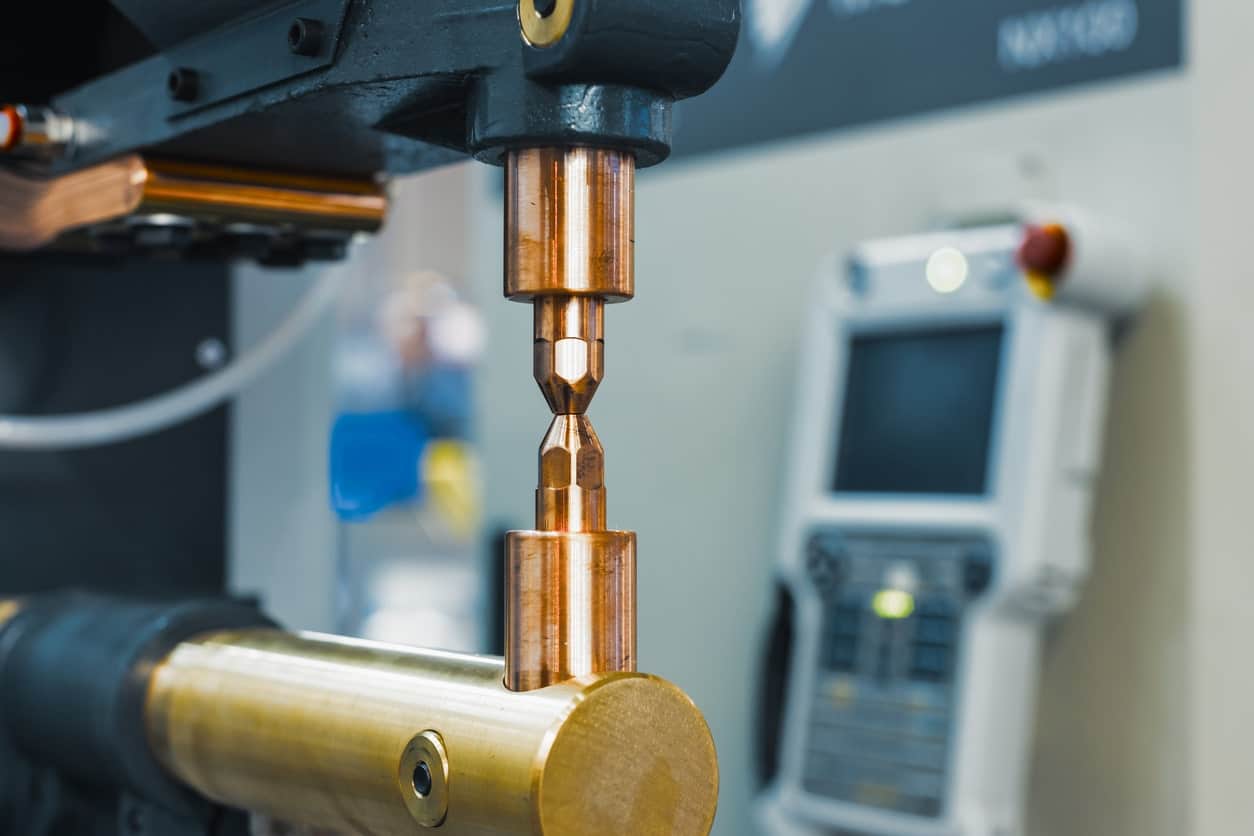
Load cell technologies help builders of spot welding machines achieve higher quality welds and more consistent nugget size by utilizing closed-loop control that is based on force feedback provided by a load cell.
Spot welding systems based on open-loop control schemes cannot deliver the same repeatability and reproducibility as systems that utilize force-feedback for closed-loop control.
Let’s explore how integrating load cells into spot welding equipment allows for more precise monitoring and control of time, force, and voltage signals that affect the accuracy and quality of welds.
Closed-Loop Feedback Weld after Weld
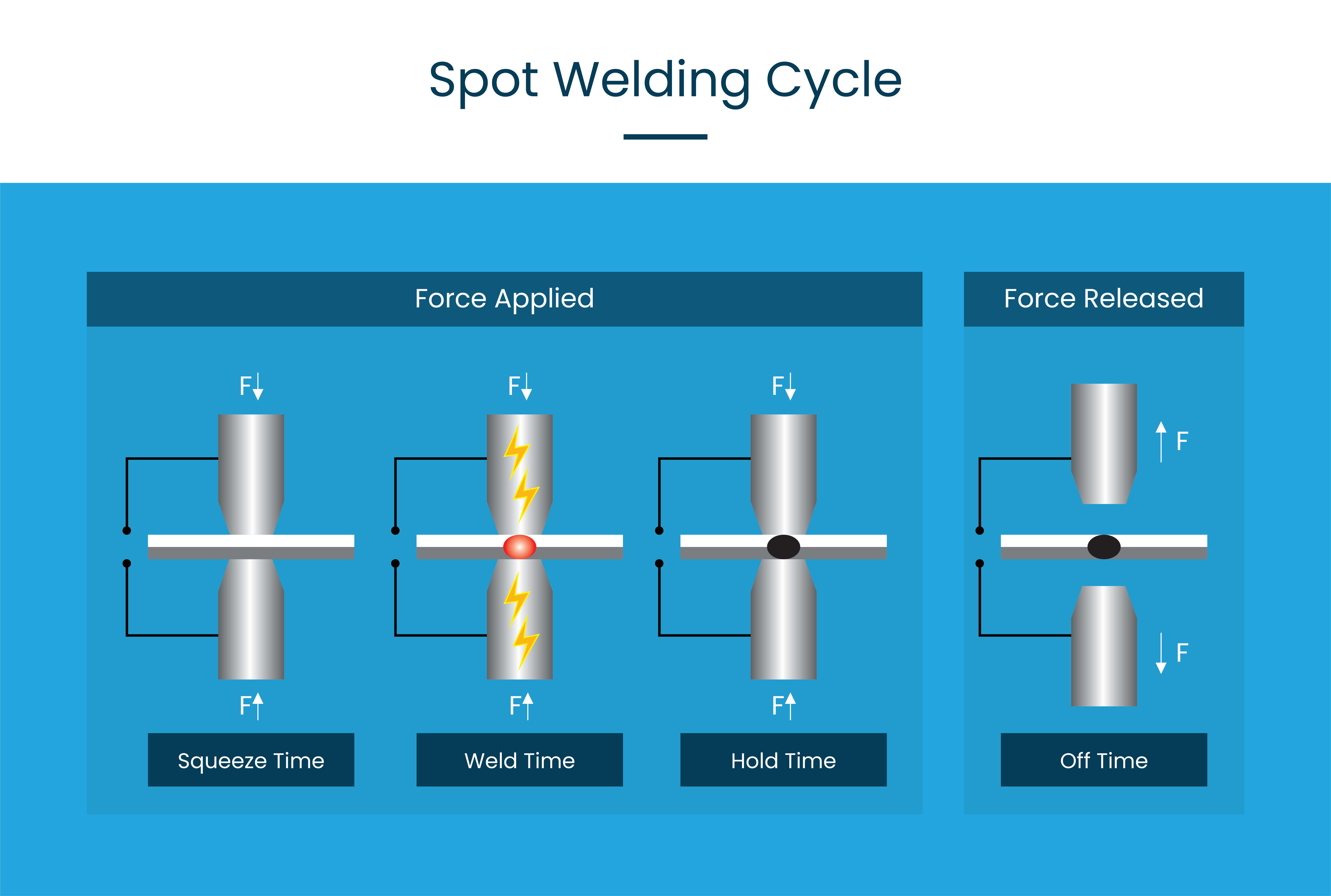
Spot welding is achieved by applying sudden decreases or increases in electrode force. When combined with other voltage and weld duration controls, load cells can improve this process by detecting load aberrations immediately.
The instantaneous force feedback delivered from load cells allows equipment operators and production engineers to monitor and control weld force with incredible accuracy.
This means production problems can be identified and corrected in real-time. Additionally, OEMs can more effectively innovate and optimize automated spot welding equipment and production when load cell measurements are fed into data acquisition systems for deeper analysis.
Load cells respond quickly to force changes, typically on the order of microseconds, making them well-suited for applications that require fast and accurate control.
Spot welding systems with closed-loop controls may be unable to measure and respond to changes in the loading event. The resulting imprecise pressure and duration causes the quality of the weld to suffer.
The Benefits Go Beyond Quality and Efficiency
Precision force controls enable automated spot-welding equipment to achieve repeatable results while maintaining speed, efficiency, and quality. Other benefits when retrofitting welding systems with load cells or choosing a system with the incorporated force sensor technology include:
- High-accuracy welding – Load cells can accurately measure variations in weld force. This allows engineers to set a target weld force and then monitor that the nominal value was indeed maintained within a given tolerance.
- Weld force monitoring and control – Closed-loop control of spot-welding systems improves repeatability by maintaining the necessary load characteristics of a welding process.
- Real-time data collection and analysis – Weld force data generated by load cells can be captured and archived for quality analysis. Such analysis can identify systemic errors, efficiency gains, and provide ongoing training material for technicians and engineers.
- More sophisticated sensor controls – Welding automation units can incorporate preventive maintenance, automatic error mitigation, and precise controls require the precision sensing capabilities of force transducers.
- Remote monitoring and services – Workers and engineers can remotely monitor welding parameters, often freeing up time for other responsibilities.
- Reduced energy consumption – Better control over the weld process can result in improved efficiencies realized as energy saving and reduced scrap rates.
- Better motion and force control – Spot welding systems that use load-cell technology produces smoother, and more finely-controlled motion actuation. Since load cells measure force, they help prevent overstressing any welding component and can alert a system to extraneous loads.
- Extended equipment life – Using load cells in welding automation is critical in improving component lifespan and minimizing failures, leading to lower maintenance costs. For example, ensuring the correct amount of force reduces the risk of overloading.
- Simplified calibration – Load cells are generally faster and easier to calibrate than hydraulic systems because the load cell output signal is in direct proportion to an applied force—rather than a pressure or current.
- Increased safety – For employees and equipment, load cell precision and predictability make them safer than pressure-based or current-based measurement systems, which lack accuracy and suffer from increased latency.
How Load Cells Integrate with Spot Welding Workflows
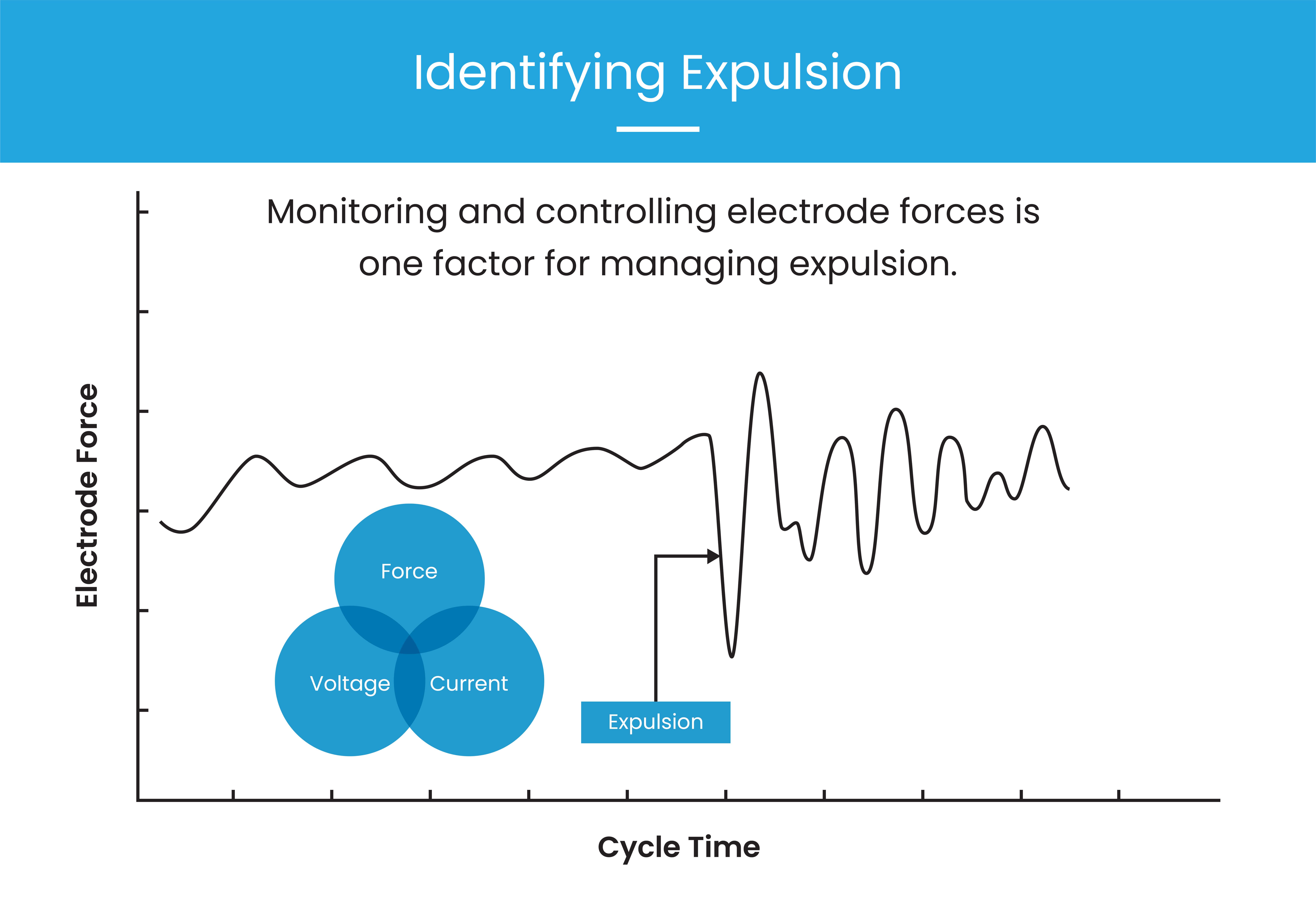
Load cells provide critical force feedback, bridging the mechanical welding phase and the electrical phase controls.
The instant force information provides the necessary data for other monitors that modulate voltage and duration.
In the case of expulsion, load cells measure the applied force for voltage compensation.
If the load cell system detects that the applied force is too low, the welding equipment can increase the current or extend the welding time to ensure that a strong weld is formed.
Various non-mechanical variables contribute to spot welding expulsion that must be accounted for within a system. Factors including dirty materials, improper electrode alignment, inadequate edge distance, and metallurgical issues must be accounted for when evaluating weld quality.
Retrofitting spot welding systems with load cells creates opportunities for controlling expulsion and supporting complex automation by providing measurement feedback to displays, PLCs, PACs, and IoT devices.
Load cells in spot welding systems can help exploit the potential of data-driven Industry 4.0.
Supporting Data Integrations
- Warnings and alerts for non-conformance
- Equipment troubleshooting
- Data capturing for production analysis
- Tablet or smartphone integration
- Secondary manufacturing actions
Types of Load Cells Used for Retrofitting Spot Welding Systems
Single-point load cells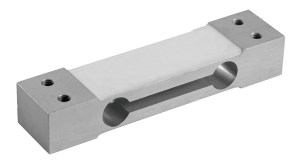 are the simplest and most compact force transducers for automated spot welding. They detect point loads with high accuracy and repeatability.
are the simplest and most compact force transducers for automated spot welding. They detect point loads with high accuracy and repeatability.
Additionally, small misalignments do not affect their performance, producing consistent readings if the load application point is off-center or unevenly distributed.
Pancake load cells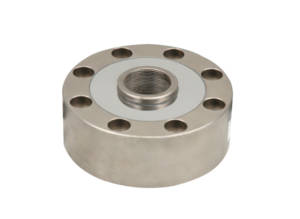 measure unidirectional compression forces.
measure unidirectional compression forces.
These components are well-suited for manual spot welding equipment with a straightforward force application and only measure compressive force.
Better Control Delivers Better Welding Results
Load cell force transducers significantly advance spot welding control and automation, enabling OEMs to provide manufacturers with welding equipment that improves product quality, safety, and integration with production workflows.Force sensors are vital to ensuring the accuracy, speed, and consistency of automated welding systems, making them a growth driver in the industry.
Manufacturers using load cell technology have opportunities to not only accelerate welding automation but also generate data that influence product strategy and the implementation of Industry 4.0 solutions to achieve a greater return on investment.
Transcell is a leading provider of force transducer technology, offering comprehensive engineering services from custom design to production and installation.
Contact us for expert advice about selecting components and integrating of load cells in your spot welding automation project.
FAQs
Load cells provide feedback on the welding force applied by the sport welding machine. This feedback supports spot welding by allowing users to monitor the welding force parameter, which is an important factor in overall weld quality.
The force feedback from load cells can be used for controlling and optimizing welding parameters. Through precision control of welding force, the quality of spot welds can be enhanced.
Load cells detect the magnitude of welding force applied during spot welding. By integrating load cell signal with a DAQ system, the force magnitude and its duration can be monitored and controlled.

